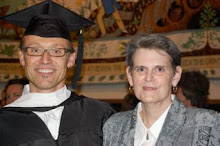Yes this movie could be understood as a documentary that includes a narrative of celebration and empowerment within a queer black community in New York City. It also is a painful and revealing documentary of the convergence of ‘isms’ in U.S. society. These are heterosexism, racism, classism, genderism and ageism. In the background the song “Got to be Real” blasts an existential rhetorical question. What is real? “Your love is my love, my love is your love, our love is here to stay, yeah!” Willie Ninja opens his imaginary make-up compact to apply ‘paint’ to his face. Then he turns the compact towards an audience member indicating some other person is needing some paint. ‘Cuz miss thing you ain’t looking good *snap.* The existential question then turns to me, the viewer. Would I survive if I was painted by the same oppression and limits imposed on people of color? Would I wear the color well, or would I be angry as f***? Would I overcome the dominant message to self-destruct? Everyone in this community is crushed by what is real, what is fact. Summarizing the wisdom of Dorian, everyone knows a black person can’t be an executive. The drag balls become a stage to experience a reality not afforded to everyday lives of those in the film. A young man walks in the category, “Business executive” inside his briefcase a travel magazine reveals the the limits of his world. The contents of the briefcase represent all the opportunities denied to him based first on the color of his skin, then his social class adds another layer of limits, the third and fourth layer of oppression is his assumed gayness and perhaps his trans-gender identity. Now the existential statement, I want to be somebody becomes a theological question, Am I somebody? It depends who is looking into the mirror. I accept Willie’s invitation to look at myself through his worldview. I gaze into the mirror and am jarred by what I observe. I see the reflection of my face and I am covered in “paint” and it is not only caked on it is embedded. It’s not white, it’s an insidious, evil, suffocating color. The real name of this color is white-systemic-privilege. The true nature of this color is white hegemony. It’s a heavy color that crushes the lives of others. I ask myself the next existential question. In which of my life dreams or goals have I had to accept a “drag-expression” as the closest possibility for that particular reality? None. My answer is painful and it really hurts. The answer is none because I live in a system of guaranteed privileges. I reach for the mirror compact hoping I can change the reflection, what is more important I wish I could personally hand it back to Willie and express my sorrow and regret. I wish my real was also his. Now this film becomes about transformation and natural law. Our lives are all linked and everyone is part of our human community. Through the courage of artist’s of color like Willie, as long as I continue to confront the real reflection of my privilege I can have hope for change in the lives of all the Willies of the world. After God created the world as described in Genesis the trajectory for the world to become good can be viewed as a personal commitment to cultivating and nurturing good. It becomes a human virtue and a commitment to breaking down barriers so new liberating possibilities can grow forward, where everyone is somebody.1
Bibliography
Borgman, Erik. "Unfixing Nature." In Homosexualities, edited by Regina Ammicht Quinn Marcella Althaus-Reid, Erik Borgman and Norbert Reck. London: SCM Press, 2008.
1 Erik Borgman, "Unfixing Nature," in Homosexualities, ed. Regina Ammicht Quinn Marcella Althaus-Reid, Erik Borgman and Norbert Reck(London: SCM Press, 2008), 73-83.
Monday, March 29, 2010
Subscribe to:
Post Comments (Atom)






No comments:
Post a Comment